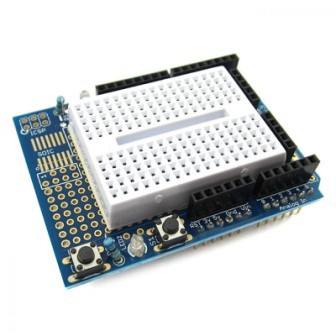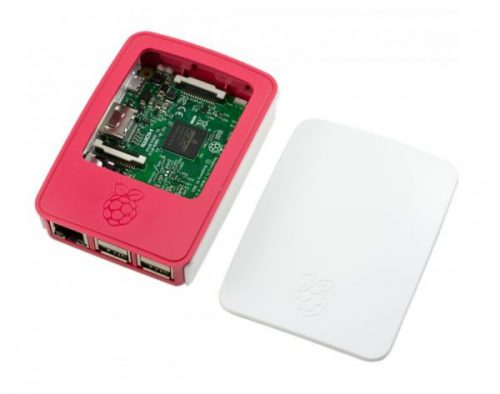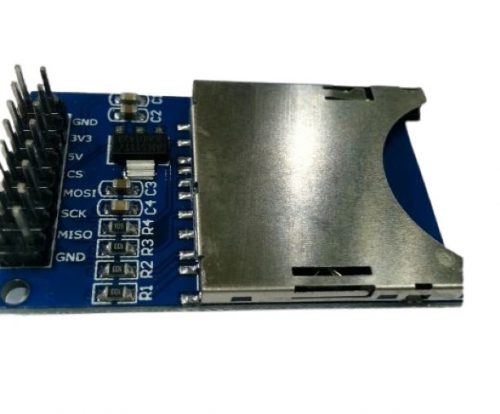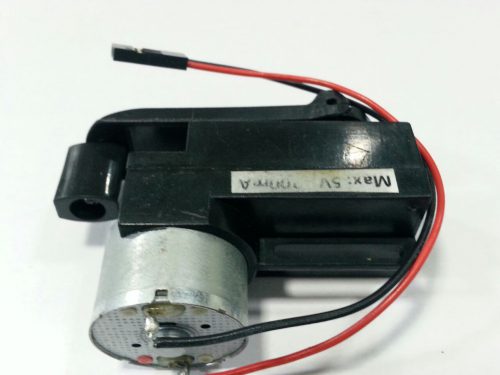-
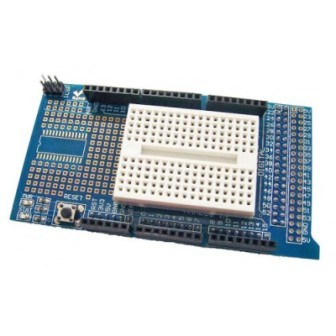 The Mega2560 Shield makes it easy for you to design custom circuits. You can solder parts to the prototyping area to create your project, or use it with a small solderless breadboard to quickly test circuit ideas without having to solder. It's got extra connections for all of the Arduino I/O pins, and it's got space to mount through-hole and surface mount integrated circuits. It's a convenient way to make your custom circuit and Arduino into a single module.
The Mega2560 Shield makes it easy for you to design custom circuits. You can solder parts to the prototyping area to create your project, or use it with a small solderless breadboard to quickly test circuit ideas without having to solder. It's got extra connections for all of the Arduino I/O pins, and it's got space to mount through-hole and surface mount integrated circuits. It's a convenient way to make your custom circuit and Arduino into a single module. -
 PICkit 2 has a separate programmer/debugger unit which plugs into the board carrying the chip to be programmed, whereas the PICkit 1 was a single unit. This makes it possible to use the programmer with a custom circuit board via an In Circuit Serial Programming (ICSP) header. This feature is not intended[3] for so-called "production" programming, however. The PICkit 2 uses an internal PIC18F2550 with FullSpeed USB. The latest PICkit 2 firmware allows the user to program and debug most of the 8 and 16 bit PICmicro and dsPIC members of the Microchip product line. The PICkit 2 is open to the public, including its hardware schematic, firmware source code (in C language) and application programs (in C# language). End users and third parties can easily modify both the hardware and software for enhanced features. e.g. Linux version of PICkit 2 application software, DOS style CMD support, etc.
PICkit 2 has a separate programmer/debugger unit which plugs into the board carrying the chip to be programmed, whereas the PICkit 1 was a single unit. This makes it possible to use the programmer with a custom circuit board via an In Circuit Serial Programming (ICSP) header. This feature is not intended[3] for so-called "production" programming, however. The PICkit 2 uses an internal PIC18F2550 with FullSpeed USB. The latest PICkit 2 firmware allows the user to program and debug most of the 8 and 16 bit PICmicro and dsPIC members of the Microchip product line. The PICkit 2 is open to the public, including its hardware schematic, firmware source code (in C language) and application programs (in C# language). End users and third parties can easily modify both the hardware and software for enhanced features. e.g. Linux version of PICkit 2 application software, DOS style CMD support, etc. -
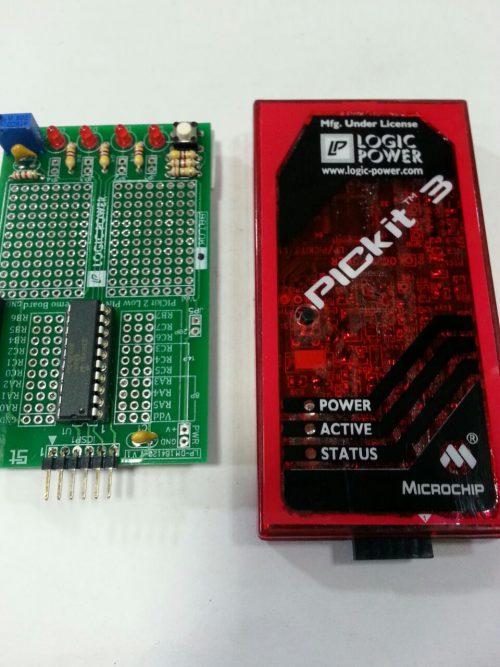 Microchip has gone on to manufacture the PICkit 3, a variation of the PICkit 2 with the same form factor and a new translucent case. It features a faster 16-bit PIC24F processor and a wider voltage regulation range. There are some complaints of it not being as reliable as the Pickit 2. Both PICkit 2 and PICkit 3 have internal, switch-mode voltage regulators. This allows them, in the case of the PICkit 2, to generate voltages from 2.5 to 5 volts, or in the case of the PICkit 3, 2.5 to 5.5 volts, from a 5 V USB supply, at around 100 mA. Both have options for calibrating the output with a multimeter, for increased accuracy. Additionally, for some PICs, the MCLR programming voltage can be generated, at around 13 to 14 volts. This voltage is required to reprogram the flash memory.
Microchip has gone on to manufacture the PICkit 3, a variation of the PICkit 2 with the same form factor and a new translucent case. It features a faster 16-bit PIC24F processor and a wider voltage regulation range. There are some complaints of it not being as reliable as the Pickit 2. Both PICkit 2 and PICkit 3 have internal, switch-mode voltage regulators. This allows them, in the case of the PICkit 2, to generate voltages from 2.5 to 5 volts, or in the case of the PICkit 3, 2.5 to 5.5 volts, from a 5 V USB supply, at around 100 mA. Both have options for calibrating the output with a multimeter, for increased accuracy. Additionally, for some PICs, the MCLR programming voltage can be generated, at around 13 to 14 volts. This voltage is required to reprogram the flash memory. -
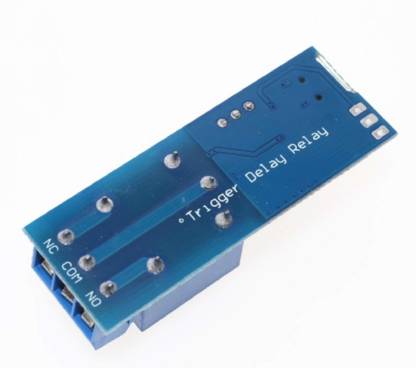
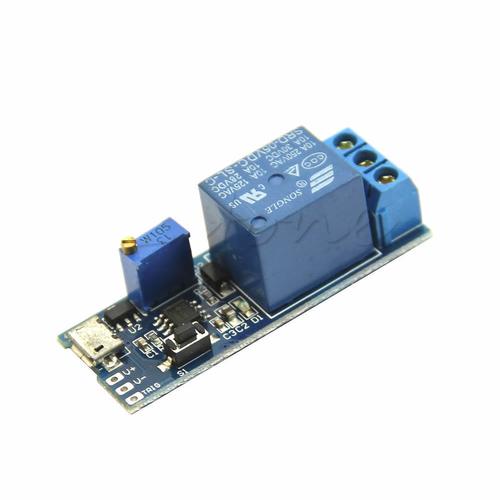 Highlights: By adjusting the potentiometer can set the length of time. MicroUSB 5.0V power supply with an input port, easy to use. 5 ~ 30V wide supply voltage. External signaltrigger and keytriggerin two ways. With a relay indicator. Anti-interference ability, the relay at various interference will not misoperation, suitable for industrial control.
Highlights: By adjusting the potentiometer can set the length of time. MicroUSB 5.0V power supply with an input port, easy to use. 5 ~ 30V wide supply voltage. External signaltrigger and keytriggerin two ways. With a relay indicator. Anti-interference ability, the relay at various interference will not misoperation, suitable for industrial control. -
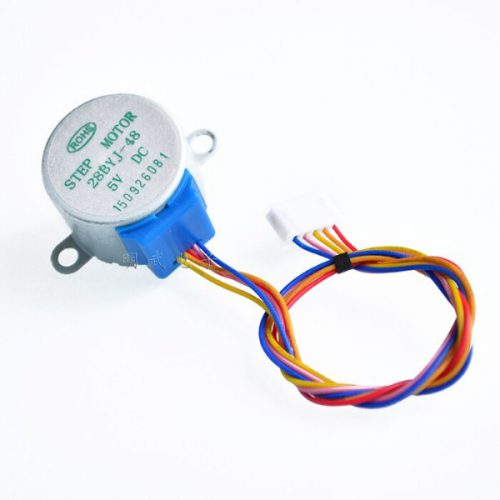 A unipolar stepper motor has one winding with center tap per phase. Each section of windings is switched on for each direction of magnetic field. Since in this arrangement a magnetic pole can be reversed without switching the direction of current, the commutation circuit can be made very simple (e.g., a single transistor) for each winding. Typically, given a phase, the center tap of each winding is made common: giving three leads per phase and six leads for a typical two phase motor. Often, these two phase commons are internally joined, so the motor has only five leads.
A unipolar stepper motor has one winding with center tap per phase. Each section of windings is switched on for each direction of magnetic field. Since in this arrangement a magnetic pole can be reversed without switching the direction of current, the commutation circuit can be made very simple (e.g., a single transistor) for each winding. Typically, given a phase, the center tap of each winding is made common: giving three leads per phase and six leads for a typical two phase motor. Often, these two phase commons are internally joined, so the motor has only five leads. -
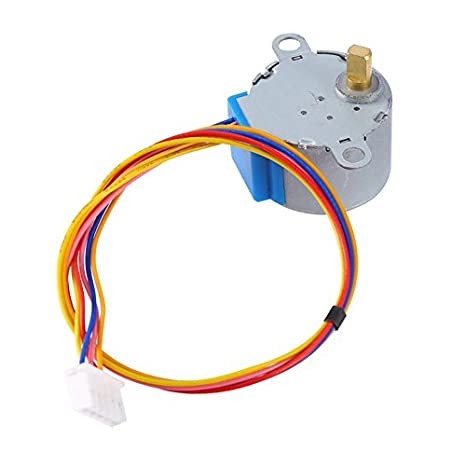 A unipolar stepper motor has one winding with center tap per phase. Each section of windings is switched on for each direction of magnetic field. Since in this arrangement a magnetic pole can be reversed without switching the direction of current, the commutation circuit can be made very simple (e.g., a single transistor) for each winding. Typically, given a phase, the center tap of each winding is made common: giving three leads per phase and six leads for a typical two phase motor. Often, these two phase commons are internally joined, so the motor has only five leads.
A unipolar stepper motor has one winding with center tap per phase. Each section of windings is switched on for each direction of magnetic field. Since in this arrangement a magnetic pole can be reversed without switching the direction of current, the commutation circuit can be made very simple (e.g., a single transistor) for each winding. Typically, given a phase, the center tap of each winding is made common: giving three leads per phase and six leads for a typical two phase motor. Often, these two phase commons are internally joined, so the motor has only five leads.

